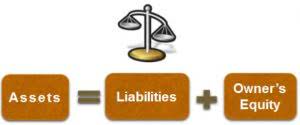Chưa có sản phẩm trong giỏ hàng.
Bookkeeping
How Do the Income Statement and Balance Sheet Differ?

We’ve broken down the steps for preparing an income statement, as well as some helpful tips. In some cases, an income statement will have more than one column so that you can compare income and expenses from different periods. Finance Costs increasing mean that the entity’s debts are increasing, and these kinds of expenses will not make the shareholders happy. The high finance costs might mean the entity’s financial strategy favorite on debts rather than equity.
Operating Expenses:

When looking at total revenue, it is essential to consider the period in question as well, such as quarterly or annual data. Comparing these figures over time will reveal any growth or decline in the company’s revenue-generating ability. For every dollar in revenue earned, the business takes home $0.37, after taking into account COGs and operating expenses. Your operating profit margin is the portion of each dollar your business keeps after taking into account both COGs and general expenses. Likewise, some are part of overhead—the amount you pay every month just to stay in business, regardless of sales, such as rent. Other operating expenses are operating costs—they increase in tandem with the amount of sales you make.

Importance of Income Statements
- In the example above, operating profits are equal to Profits before tax.
- The multi-step income statement provides an in-depth analysis of the financial performance of a business in a specific reporting period by using these profitability metrics.
- After taking into account all non-operating items, the bottom line of the company showed $7,000 as net profit.
- Used in both managerial and financial accounting, it is an invaluable resource to internal and external stakeholders alike.
- The important financial transactions occurring every day are reported and presented in the income statement.
To ensure that users could analyze the current financial performance, this statement must present the current period’s financial information with its comparative period, usually the previous period. However, the income statement is different from the balance sheet and other statements like cash flow and equity changes since it shows only financial transactions. In contrast, the balance sheet shows the balance of accounts at the end of the period. EBT is a financial metric in a multi-step income statement that indicates a company’s performance. It is arrived at by subtracting all the income expenses before any taxes are levied.
General Expenses (aka Selling, General, and Administrative Expenses, or SG&A)

Income statement accounts are also referred to as temporary accounts or nominal accounts because at the end of each accounting year their balances will be closed. This means that the balances in the income statement accounts will be combined and the net amount transferred to a balance sheet equity account. In the case of a sole proprietorship, the equity account is the owner’s capital account. As a result, the income statement accounts will begin the next accounting year with zero balances.
Net Income (aka Net Sales, or the bottom line)
You, or the managers at your company, are in charge of dealing with total revenue, COGS, and general expenses. Your accountant is responsible for managing your tax burden and your company debt. As you move down your income statement, you’ll see that amount chipped away, used to pay for the cost of creating your products or services and keeping your company running. Multi-step income statements are one of three types of income statement.
Income statement evaluates the profit or loss of a business over a period of time, whereas balance sheets show the financial position of a business at a specific point in time. Income statements provide a summary of the performance of a company during a specific accounting period and are useful for various stakeholders like management, investors, lenders, and creditors. It can also help improve financial analysis, allowing you to plan for the future and scale your business successfully.

Current Assets: Definition, Classification, Calculation, and Example
Grasping the differences between COGS, operating expenses, and non-operating expenses enables you to identify the primary drivers of a company’s profitability and make informed decisions. Income statements, also called profit and loss or P&L statements, are one of the most important financial statements for tracking your company’s revenue and growth. Public companies are required to issue what accounts are found on an income statement an income statement, along with the balance sheet and cash flow statement, every quarter. Creditors are often more concerned about a company’s future cash flows than its past profitability. However, their research analysts can use an income statement to compare year-on-year and quarter-on-quarter performance. This is the gross operating profit that the entity generates for the period.
Operating profit margin
- That’s good for planning future income, but not good for knowing how much cash you have to work with.
- EBITDA is not normally included in the income statement of a company because it is not a metric accepted by Generally Accepted Accounting Principles (GAAP) as a measure of financial performance.
- A balance report details your end balance for each account that will be listed on the income statement.
- In addition, interest income earned from capital lying in the bank is also part of a non-operating revenue portfolio.
- 11 Financial may only transact business in those states in which it is registered, or qualifies for an exemption or exclusion from registration requirements.
- Operating expenses are basically the selling, general, and administrative costs, depreciation, and amortization of assets.
- When a business owner makes an income statement for internal use only, they’ll sometimes refer to it as a “profit and loss statement” (or P&L).
Interest expenses are expenses incurred by a business for borrowed funds. Direct costs can include parts, labor, materials, and other expenses directly related to production. It is also referred to as the cost of sales if the company is offering services. Comparing these numbers, you can see that just over 30% of Microsoft’s total sales went toward costs for revenue generation. Gross profit is what’s left of your revenue after deducting the cost of goods sold (COGS)—the direct costs related to producing goods or providing services.
- Primary revenue and expenses offer insights into how well the company’s core business is performing.
- With all of the data you’ve compiled, you’ve now created an accurate statement.
- You, or the managers at your company, are in charge of dealing with total revenue, COGS, and general expenses.
- Avoiding common accounting errors is the best way to ensure the accuracy of your income statement.
- Comparing the income statement to other financial statements, like balance sheets and cash flow statements, will give you a holistic perspective on a company’s financial position.
- In contrast, the balance sheet shows the balance of accounts at the end of the period.
Experience seamless accounting with Zoho Books
If you have found yourself struggling to find the time to create your own profit and loss report, or P&L, from scratch, a free invoice statement template is the perfect solution. Operating revenue is realized through a business’ primary activity, such as selling its products. Non-operating revenue comes from ancillary sources such as interest income from capital held in a bank or income from rental of business property. These are all expenses that go toward a loss-making sale of long-term assets, one-time or any other unusual costs, or expenses toward lawsuits. A business’s cost to continue operating and turning a profit is known as an expense. Some of these expenses may be written off on a tax return if they meet Internal Revenue Service (IRS) guidelines.





